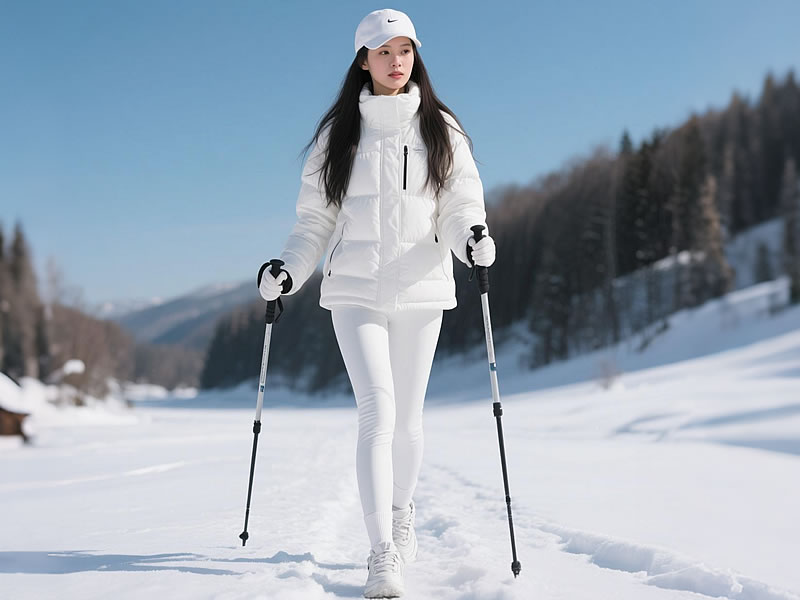Tips for lightweight winter hiking gear
When the winter chill sets in, the allure of hiking through snow - dusted trails can be irresistible. However, the thought of lugging around heavy, bulky winter gear often deters many outdoor enthusiasts. Fear not! With the right lightweight winter hiking gear, you can enjoy the beauty of the winter wilderness without being weighed down. This article will provide you with essential tips to curate a lightweight yet effective gear list for your winter hiking adventures.

Clothing: Layers for Warmth and Flexibility
The key to staying warm and comfortable during winter hikes is proper layering. Each layer serves a specific purpose, and choosing lightweight materials is crucial.
Base Layer
The base layer is in direct contact with your skin, so it should be moisture - wicking. Merino wool is an excellent choice for base layers. It is not only incredibly soft and odor - resistant but also highly effective at wicking away sweat. Unlike cotton, which retains moisture and can leave you feeling cold and clammy, merino wool keeps you dry and warm. Lightweight synthetic materials, such as polyester blends, are also good options. They dry quickly and offer excellent breathability. Look for base layers with flat seams to prevent chafing during long hikes.
Mid - Layer
The mid - layer is responsible for insulation. Down jackets are a popular choice for mid - layers due to their high warmth - to - weight ratio. A high - quality down jacket can provide exceptional warmth while being incredibly lightweight and packable. When choosing a down jacket, pay attention to the fill power. Higher fill power indicates that the down is more lofted and can trap more air, providing better insulation. Synthetic insulated jackets are another great option, especially in wet conditions. They may not be as lightweight as down jackets in some cases but maintain their insulating properties even when damp. Fleece jackets are also a reliable mid - layer choice, offering a good balance of warmth and weight.
Outer Layer
The outer layer protects you from the elements, including wind, snow, and rain. A lightweight, waterproof, and breathable hardshell jacket is a must - have. Look for jackets made with materials like Gore - Tex or similar high - performance membranes. These materials prevent water from seeping in while allowing sweat vapor to escape, keeping you dry and comfortable. Some hardshell jackets also feature underarm zippers for added ventilation, which is useful when you start to work up a sweat during strenuous hiking. Additionally, consider a lightweight pair of waterproof and windproof pants to complete your outer layer.
Footwear: Light and Sturdy
Your feet are your foundation on the trail, and in winter, the right footwear is essential. Look for lightweight hiking boots that offer excellent insulation, waterproofing, and traction.
Insulated hiking boots with a Thinsulate or similar insulation system can keep your feet warm in cold temperatures. Make sure the boots are also waterproof to prevent snowmelt and moisture from getting in. A good pair of winter hiking boots should have a sturdy sole with deep lugs for better traction on snow and ice. Microspikes or crampons can be attached to your boots for added grip on particularly icy sections of the trail. Additionally, wearing lightweight, moisture - wicking hiking socks made of materials like merino wool can enhance the comfort of your feet and prevent blisters.
Backpack: Compact and Functional
A lightweight backpack is essential for carrying your gear during winter hikes. Look for backpacks made from durable yet lightweight materials, such as ripstop nylon. Consider the capacity of the backpack based on the length of your hike and the amount of gear you need to carry. For day hikes, a 20 - 30 - liter backpack is usually sufficient.
Features like adjustable shoulder straps, a padded hip belt, and a sternum strap help distribute the weight evenly, reducing strain on your back and shoulders. Some backpacks also come with built - in hydration systems, which are convenient for staying hydrated on the trail. However, in winter, make sure to insulate your water tube to prevent it from freezing.
Other Essential Lightweight Gear
Head and Hand Protection
Don't forget to protect your head, ears, and hands. A lightweight beanie made of merino wool or a synthetic blend can keep your head warm. Balaclavas are also a great option as they can cover your entire face, leaving only a small opening for your eyes and mouth. For your hands, lightweight, insulated gloves or mittens are necessary. Some gloves feature touch - screen compatibility, allowing you to use your smartphone or GPS device without having to take them off.
Navigation Tools
In winter, visibility can be reduced due to snow, fog, or shorter daylight hours. Carrying lightweight navigation tools, such as a map, compass, or a handheld GPS device, is crucial for staying on the right path. Make sure to keep your electronic devices warm to prevent battery drain in cold temperatures.
Emergency Supplies
Pack lightweight emergency supplies, including a first - aid kit, a whistle, a lightweight emergency blanket, and a multi - tool. These items can be a lifesaver in case of an unexpected situation on the trail.
In conclusion, choosing lightweight winter hiking gear doesn't mean sacrificing functionality or warmth. By carefully selecting each piece of gear based on its performance, weight, and suitability for winter conditions, you can create a gear setup that allows you to enjoy the wonders of winter hiking without being burdened by heavy equipment. Remember to always check the weather forecast before heading out, and be prepared for changing conditions on the trail. With the right lightweight gear, your winter hiking adventures are sure to be both enjoyable and memorable.






